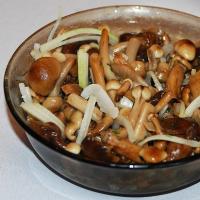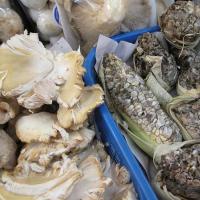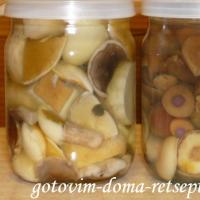Description of white row mushroom, distribution, photo
White Ryadovka (Tricholoma album) belongs to the Ryadovkovye family, the genus Tricholoma or Ryadovka. This agaric fully justifies its name, as it usually grows in groups, rows. This species is inedible, and, according to some reference books and publications, it is completely poisonous. Therefore, it is very important to carefully read the description of the white row, so as not to accidentally bring it home.
- the cap is quite dense, fleshy, convex, with curved edges, in young mushrooms and flattened, with wavy edges in mature ones, dry to the touch, dull. In the center of it, a small tubercle can sometimes form. The color of the skin is white, grayish; in adult specimens, the middle of the cap is covered with yellowish spots. Its diameter is up to 10 cm;
- the stem is in the form of a cylinder, dense, elastic, fibrous, in young rows of the same color as the surface of the cap, with age at the base it changes its shade to yellowish. Powdery coating is visible in the upper part. Leg length - up to 10 cm, thickness - up to 1.5 cm;
- the pulp is fibrous, elastic, dense. White color. A distinctive feature of the white row is the smell that the pulp emits when damaged - it is very unpleasant, seems musty and resembles the "ambre" coming from the radish. At the same time, young mushrooms smell weaker than mature ones;
- the plates are wide, often located, of different lengths, slightly descending along the stem, white in young specimens and turning yellow as the fungus grows and matures;
- spores are white.
Distribution and fruiting period
White Row is a fungus that prefers to live on acidic soils in dense deciduous or mixed forests, usually where birch or beech grow. Often you can stumble upon it in a park, grove, on the edge of a forest or an open bright clearing. The main area of growth is Primorye and the European part of Russia. The fruiting season is July-October.

Similar types and differences from them
This mushroom is quite easy to confuse with representatives of the Champignon genus, however, if you look closely or sniff, you can find obvious differences: the plates of the row do not darken, and the flesh emits a noticeable pungent odor. Champignons, on the contrary, have a pleasant mushroom aroma. From other types of edible rows, it is also distinguished by the presence of an unpleasant odor. By the way, another difference between white rowing and champignon is the absence of a ring on the leg or a blanket under the hat.
It is easy to confuse it with another species - a smelly row. It is also an inedible mushroom, and it smells like lighting gas. A stinky row is an organism whose fruiting body contains hallucinogens that can cause the development of both auditory and visual hallucinations.
In order to orient yourself and not make a mistake while picking mushrooms, before going into the forest, pay attention to the photo of the white row presented in this article - after looking at how it looks, you certainly will not be mistaken and will not confuse it with other species.
Accidentally eating white rowan can cause indigestion. And her smell is so persistent that it is not removed even during prolonged heat treatment. It is better not to risk it and simply throw the suspicious mushroom out of your basket.



